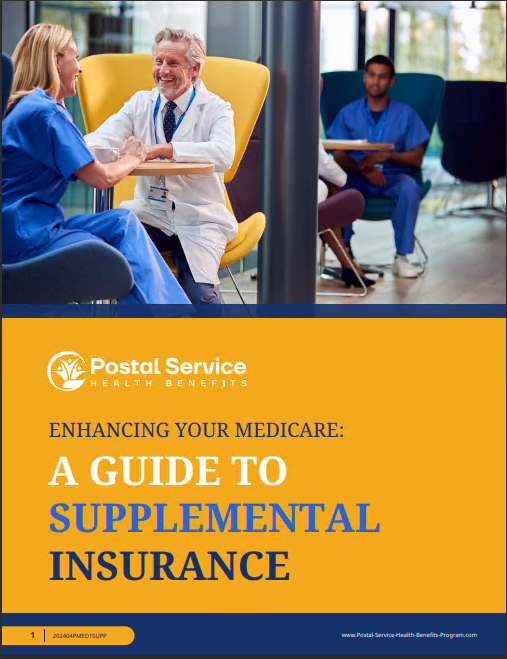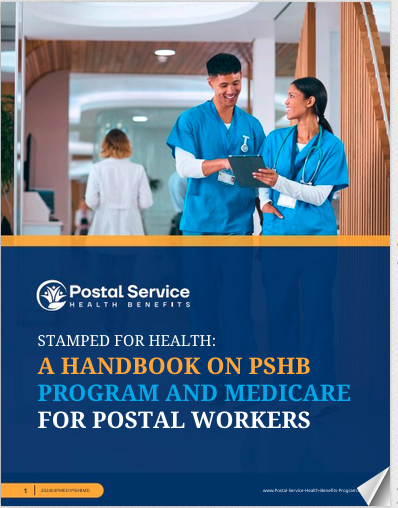Key Takeaways
-
The Postal Service Health Benefits (PSHB) program is set to change how USPS workers and retirees access healthcare, offering more tailored options for 2025. This shift means new considerations and opportunities for every postal worker.
-
If you’re Medicare-eligible, new rules about enrollment in Medicare Part B could directly impact your coverage—it’s crucial to prepare early, as these requirements might alter your costs and options significantly.
What Does PSHB Mean for You?
The upcoming shift to the Postal Service Health Benefits (PSHB) program is a major transformation in federal employee healthcare. Starting January 1, 2025, PSHB will replace the Federal Employees Health Benefits (FEHB) program for USPS workers, retirees, and eligible family members.
This change isn’t just a minor update—it’s a complete overhaul designed specifically for postal employees and retirees. With tailored plans and new structures, PSHB aims to streamline healthcare benefits. However, it’s up to you to ensure the transition goes smoothly. Let’s dig into the essential details you need to navigate these changes confidently.
Why Is This Happening?
The USPS is making this switch as part of a larger strategy to stabilize its finances and better align healthcare options with the unique needs of postal workers. PSHB plans will:
-
Operate separately from FEHB, catering exclusively to USPS employees and retirees.
-
Integrate more closely with Medicare for eligible members, reducing redundancies and overall costs.
-
Allow USPS to tailor healthcare options more specifically to postal service needs, potentially improving efficiency and satisfaction.
The goal is to streamline benefits, manage rising healthcare expenses, and provide coverage that works better for you. These changes align with a larger effort to modernize the USPS’s operations and secure its workforce’s well-being.
Important Dates and Deadlines
Timing is everything when it comes to the PSHB transition. Here are the key dates:
-
Open Season: From November 11 to December 9, 2024, you can select a new PSHB plan or review your automatically assigned plan.
-
Program Launch: PSHB coverage begins January 1, 2025.
During Open Season, take the time to compare plans and ask questions. Auto-enrollment in a similar plan will happen if you don’t actively choose one, but reviewing your options ensures you’re making the best decision for your needs. Preparation during this period will help you avoid unexpected surprises when the program begins.
Key Changes Under PSHB
1. Medicare Enrollment Is a Big Deal
If you or a family member are eligible for Medicare, new rules require you to enroll in Medicare Part B to maintain PSHB coverage. Here’s what you need to know:
-
Who Needs to Enroll: Most Medicare-eligible annuitants and dependents must sign up for Part B. However, if you retired before January 1, 2025, and aren’t already enrolled, you may be exempt from this requirement.
-
Cost of Part B: For 2025, the standard monthly premium for Part B is projected to be $185. This expense is separate from PSHB premiums but ensures coordinated care and lower out-of-pocket costs overall.
-
Coordination of Benefits: Medicare Part B will act as your primary insurer, with PSHB functioning as secondary coverage. This dual-layered structure is designed to maximize coverage while minimizing financial risk for enrollees.
2. Tailored Health Plans
Unlike FEHB, PSHB plans are designed exclusively for USPS employees and retirees. This means more relevant coverage options tailored to your unique needs as a postal worker. However, your current FEHB plan might not align perfectly with PSHB’s offerings. Reviewing your plan is essential to ensure you’re getting the most suitable coverage.
3. Separate Dental and Vision Coverage
The PSHB program does not replace the Federal Employees Dental and Vision Insurance Program (FEDVIP). You’ll need to enroll in FEDVIP separately during Open Season if you want dental and vision benefits. These benefits remain crucial for many families, so be sure to assess your coverage needs comprehensively.
Tips to Make the Transition Easier
-
Start Early: Research the new PSHB plans well before Open Season. Familiarize yourself with the benefits, premiums, and networks available. Early preparation can save you from making rushed decisions.
-
Confirm Medicare Enrollment: If you or any dependents are eligible for Medicare, confirm your Part B enrollment status and plan for the additional cost. Failure to enroll could affect your PSHB eligibility and leave you underinsured.
-
Review Family Coverage: Ensure that all eligible family members are included under your plan and understand how the transition affects them. Family members may face different rules, so it’s vital to stay informed.
-
Use Available Tools: The USPS and Office of Personnel Management (OPM) will provide resources like comparison tools and calculators to help you navigate your choices. Taking advantage of these can simplify the decision-making process.
-
Ask Questions: Don’t hesitate to reach out to HR or a benefits specialist if you’re unsure about your options. Knowledge is power, and a quick conversation can clarify complex details.
-
Understand Plan Differences: Look at copays, deductibles, and network providers to identify which plan aligns best with your healthcare usage patterns.
What Happens If You Don’t Act?
Auto-enrollment ensures you’ll have continuous coverage, but it’s not always the best option. The automatically assigned plan may not:
-
Include your preferred doctors and facilities.
-
Offer the most affordable premiums and out-of-pocket costs for your situation.
-
Reflect changes in your family’s healthcare needs.
Taking action during Open Season allows you to make an informed decision and avoid surprises in 2025. Skipping this step could lead to unnecessary expenses or gaps in care.
How Medicare and PSHB Work Together
If you’re already enrolled in Medicare or will become eligible soon, understanding how PSHB coordinates with Medicare is critical:
-
Primary and Secondary Coverage: Medicare Part B becomes your primary insurer, with PSHB acting as secondary coverage. This setup can help reduce your out-of-pocket costs by covering what Medicare doesn’t.
-
Prescription Drug Costs: PSHB plans will continue to include prescription drug coverage, complementing Medicare Part D. This ensures seamless access to medications without the need for multiple separate plans.
-
Cost Management: Combining Medicare and PSHB can streamline your healthcare expenses, but you need to be aware of all premiums and out-of-pocket responsibilities. Proactively understanding your financial commitments will help you avoid surprises.
Common Questions About PSHB
Will My Plan Cover the Same Services?
PSHB plans aim to provide comprehensive coverage, but not all plans are identical to current FEHB offerings. Reviewing the details is crucial to avoid disruptions in your care.
What If I’m Not Eligible for Medicare?
If you’re not eligible for Medicare, you can still enroll in a PSHB plan, which will function similarly to FEHB coverage without requiring Part B enrollment. This ensures all USPS employees and retirees have viable options.
Are Premiums Increasing?
While general costs will be comparable to FEHB, specific premiums and out-of-pocket expenses may vary based on the plan you choose. Carefully assessing your options will help you avoid unexpected increases.
The Bigger Picture: Why PSHB Matters
The transition to PSHB isn’t just about switching plans—it’s about adapting to a system designed with postal workers in mind. By creating a program tailored to USPS employees and retirees, the USPS aims to:
-
Improve healthcare options for postal workers.
-
Manage costs more effectively through focused coverage.
-
Ensure long-term sustainability for employee benefits, providing a stable foundation for future generations of postal employees.
This is a chance to take control of your healthcare, but it requires preparation and active participation. Embracing the change can lead to better health outcomes and financial security.
Final Thoughts on PSHB
Change can be daunting, but the shift to PSHB offers opportunities to find a plan that works better for you and your family. With the right approach—starting early, asking questions, and actively participating in Open Season—you can navigate these updates with confidence. The future of USPS health benefits is here, and it’s time to take charge of your coverage. Staying proactive now will ensure smoother transitions and better peace of mind for 2025 and beyond.







